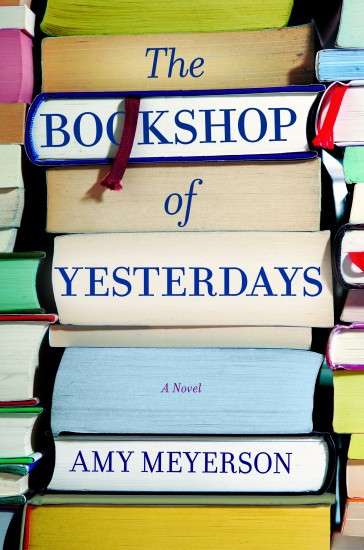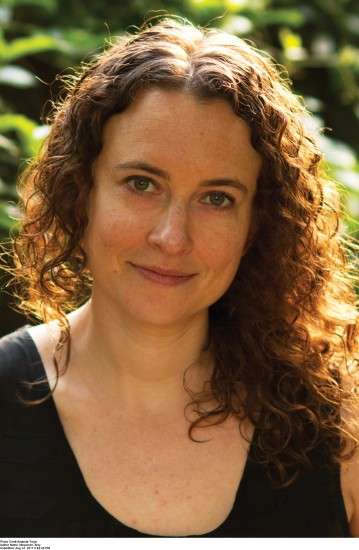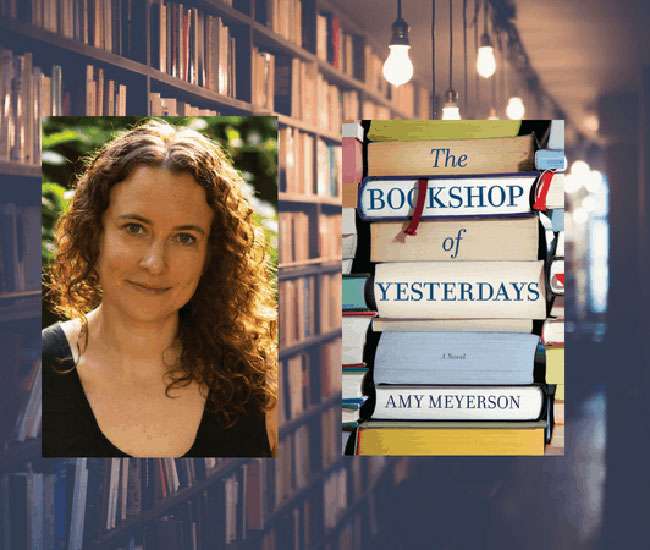
A romance, a quest, and a literary adventure, Amy Meyerson’s debut novel The Bookshop of Yesterdays (Park Row) introduces a young woman in furious pursuit of the past.
In the novel, just released in paperback, Miranda Brooks, named for the heroine of Shakespeare’s play The Tempest, is a history teacher who lives in Philadelphia. She has just moved in with her boyfriend, Jay, who often rubs her the wrong way.
But now it’s summer, and they can get to know each other better – until Miranda is called to Los Angeles where her Uncle Billy has died. He has bequeathed to her Prospero Books, a bookstore located in the rapidly gentrifying Silver Lake neighborhood. After the funeral, Miranda, who had not seen her uncle for 16 years, embarks on a journey, using literary clues left by Billy, to uncover deeply buried family secrets that will rock her soul.
Along the way, a cast of characters is revealed to her, including her dead uncle’s friends – a physician, a mathematician, and a memoirist – and the four employees of Prospero Books who eye her with equal parts of hope and suspicion. Not least of all, Miranda will come to know, as if for the first time, her uncle, her mother, and her father. Ultimately, Miranda finds her place in the world, committing to honor the past by carrying the floundering bookstore into the future.
We had the chance to talk with Amy Meyerson about her life, her debut novel, its themes, her process and some of her inspirations.
Claudia Keenan: How did you come to imagine such a complex plot? Did it emerge from any particular experience?
Amy Meyerson: I had read an article about the bizarre and heartwarming items readers have found in used books, everything from food scraps and a bullet to dried flowers and intimate letters. Some of these items—like the dirt a landscape architect sprinkled in his books so they smelled like the earth—were left intentionally. Others—like the photograph of a beloved dog—were misplaced and sorely missed.
As I read about the array of items readers abandoned in books, my mind kept drifting to the next reader who might discover these keepsakes. Eventually this fascination with what we find in books developed into the plot device of the scavenger hunt in The Bookshop of Yesterdays.
CK: Many authors make appearances in the book, including Jane Austen, Erica Jong, Edgar Allan Poe, John Steinbeck and Lewis Carroll. Are they personal favorites of yours?
AM: Definitely! I included some of my favorite novels, but more important, I tried to include novels that readers love, as well. I really wanted Billy’s scavenger hunt to be a celebration of books and reading. Since reading is such a solitary practice, we’re constantly finding ways make it as communal an experience as possible. That’s why book clubs are so popular.
I tried to create something similar on the page through the scavenger hunt clues and literary references. I wanted readers to feel that rush of nostalgia when they saw mention of a book they loved.
CK: While the book reveals a web of difficult relationships, the one you portray most intensely is that between Miranda and her mother, Suze. You got it so right—the push and pull, the I-love-you and I-hate-you. Can you share any wisdom on writing about mothers and daughters?
AM: Although on the surface The Bookshop of Yesterdays is about Miranda’s relationship with her uncle, the novel is really about her relationship with her mother. As a daughter, one of the things that fascinates me is how we can and can’t know our parents, particularly our mothers. It’s difficult to conceive of their lives before we were born, and this makes them inherently unknowable no matter how many stories we’re told.
Since the novel is from Miranda’s point of view, I started with her perception of her mom and her inability to access her mother in the way she wanted. As the novel progresses, particularly at the end, we get to understand Susan more through her own interpretations of the past.
This shift was really important to me. It helps the readers—and Miranda—have more empathy for Susan. Although Susan is probably the antagonist in the novel and has undoubtedly made some questionable choices, she’s a caring mother. In writing mothers and daughters, I think it’s important that neither character is right or wrong. Both perspectives must be understandable and relatable.
CK: Much of the action is set in Prospero Books, the store Miranda’s Uncle Billy left to her. You beautifully evoke the comfort and camaraderie so distinctive of independent bookstores. Did you model it after one from your childhood or one or several you have known as an adult?
AM: I wanted Prospero Books to be a celebration of bookstores and the role they play in our communities. Visually, the store most resembles Stories Books & Café in Echo Park, where I wrote much of the first draft. While I was writing, I visited as many bookstores as I could, and little bits of these stores made their way into Prospero Books. I also spent a lot of time at Skylight Books in Los Feliz where the manager, Steve, graciously gave me a behind-the-scenes tour and answered all my questions about running a bookshop.
CK: Several professions are woven into the story: seismology, mathematics, medicine, teaching, law. Have you had close encounters with any of them (besides teaching)?
AM: Ha—it is quite an array of professions, isn’t it? My parents are both lawyers by training, so I find everything I write ends up having a lawyer in it. I also love to research and see writing as an opportunity to learn about something new. This time, it was seismology and particle physics.
From the first moment I conceived of Billy, and the kind of person who would plan such an elaborate scavenger hunt, I knew he was a scientist. And I wanted The Bookshop of Yesterdays to be a California novel, so seismology just made sense. Plus, I love how earthquakes function as a symbol for fraught relationships, the way there’s tension building beneath the surface, the way you know a fight is coming but can’t predict when it will occur—the parallels worked great!
CK: How has teaching writing influenced your own work?
AM: Teaching and writing complement each other perfectly—writing makes me a better teacher and teaching makes me a more committed writer. As a teacher, I emphasize revision and not being precious about your work. “Kill your darlings”—the idea that if you’re holding onto something that doesn’t serve the story just because you love it, you must cut it—is one of my favorite mantras.
I tell students they have to be honest with themselves about what is and isn’t working in their writing as well as be receptive to feedback. They also have to commit to drafting and redrafting and redrafting again if they want to produce their best work. Whenever I advise students about the effort that goes into producing their best work, I’m reaffirming this for myself. I have to follow my own advice.
CK: Are you working on another novel?
AM: Yes, and I’m so excited about it! My new novel is about a historic diamond that has been missing since 1919. I don’t want to give too much away, but the novel begins when the main characters’ grandmother passes away and they find this historic diamond tucked into the back of her dresser. They need to discover how their grandmother ended up with this noteworthy and valuable diamond as well as whether it is lawfully theirs. I’ve gotten to do a lot of fun research about provenance law as well as European history and the history of jewelry and gemstones. I’m really looking forward to sharing the novel with readers!
ABOUT AMY MEYERSON:

Photo Credit to Amanda Treyz
Amy Meyerson is a graduate of Wesleyan University and the University of Southern California. She lives in Los Angeles and teaches in the Writing Program at the University of Southern California. The Bookshop of Yesterdays is her first novel.



